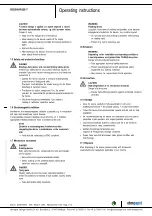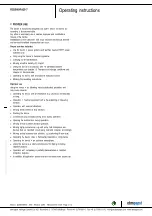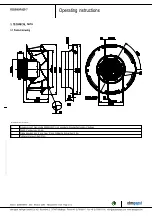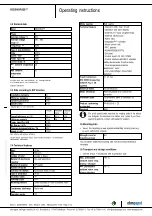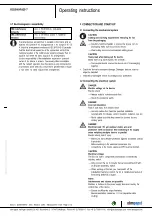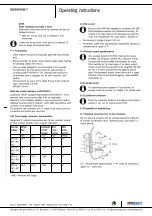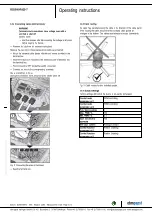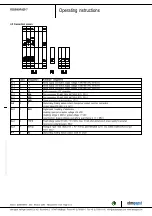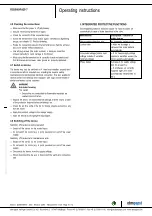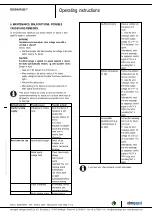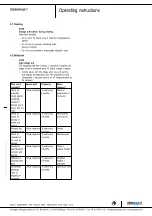
Operating instructions
R3G560-RA25-71
Translation of the original operating instructions
2. PROPER USE
The device is exclusively designed as a built-in device for moving air
according to its technical data.
Any other or secondary use is deemed improper and constitutes a
misuse of the device.
Installations on the customer's side must meet the mechanical, thermal
and service life-related stresses that can occur.
Proper use also includes:
●
Use the device in power systems with earthed neutral (TN/TT power
systems) only.
●
Only using the device in stationary systems.
●
Carrying out all maintenance.
●
Moving air with a density of 1.2 kg/m³.
●
Using the device in accordance with the permitted ambient
temperature, see chapter 3.6 Transport and storage conditions and
chapter 3.2 Nominal data.
●
Operating the device with all protective features in place.
●
Minding the operating instructions.
Improper use
Using the device in the following ways is particularly prohibited and
may cause hazards:
●
Operating the device with an imbalance, e.g. caused by dirt deposits
or icing.
●
Operation in medical equipment with a life-sustaining or lifesaving
function.
●
Operation with external vibrations.
●
Moving solids content in flow medium.
●
Painting the device
●
Connections (e.g. screws) coming loose during operation.
●
Opening the terminal box during operation.
●
Moving air that contains abrasive particles.
●
Moving highly corrosive air, e.g. salt spray mist. Exceptions are
devices that are intended for salt spray mist and protected accordingly.
●
Moving air that contains dust pollution, e.g. suctioning off saw dust.
●
Operating the device close to flammable materials or components.
●
Operating the device in an explosive atmosphere.
●
Using the device as a safety component or for taking on safety-
related functions.
●
Operation with completely or partially disassembled or modified
protective features.
●
In addition, all application options that are not listed under proper use.
Item no. 52299-5-9970 · ENG · Revision 82270 · Release 2014-11-28 · Page 3 / 12
ebm-papst Mulfingen GmbH & Co. KG · Bachmühle 2 · D-74673 Mulfingen · Phone +49 (0) 7938 81-0 · Fax +49 (0) 7938 81-110 · info1@de.ebmpapst.com · www.ebmpapst.com


